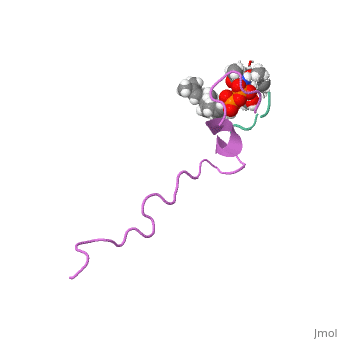Nisin
NisinNisin
[1] Functionnisin is a polycylic antibacterial peptide, with 34 amino acid residues used as a food preservative. Nisin is produced by fermentation using the bacterium Lactococcus lactis. While in general most bacteriocins inhibit only closely related species, nisin is a rare example of a "broad-spectrum" bacteriocin effective against many Gram-positive organisms, including lactic acid bacteria (commonly associated with spoilage), Listeria monocytogenes (a known pathogen), Staphylococcus aureus, Bacillus cereus, Clostridium botulinum, etc. It is also particularly effective against spores. Gram-negative bacteria are protected by their outer membrane but may become susceptible to nisin action after a heat shock or when this is coupled with the chelator EDTA. Nisin is soluble in water and can be effective at levels nearing the parts-per-billion range. DiseaseRelevanceIn the food industry, it is obtained from the culturing of L. lactis on natural substrates, such as milk or dextrose, and is not chemically synthesized. Structural highlightsThis is a sample scene created with SAT to by Group, and another to make of the protein. You can make your own scenes on SAT starting from scratch or loading and editing one of these sample scenes. the structure of nisin that is available here is complex of nisin with lipid II. The origin of this structure is from lactococcus lactis.
Basic structure of nisin is presented . You can see the chain fron N (blue) to C (red). you can see the peptid in a spacefill presentation. |
| ||||||||||
3D structure of nisin3D structure of nisin
1wco - Nisin + lipid - Lactococcus lactis - NMR
ReferencesReferences
- ↑ Herraez A. Biomolecules in the computer: Jmol to the rescue. Biochem Mol Biol Educ. 2006 Jul;34(4):255-61. doi: 10.1002/bmb.2006.494034042644. PMID:21638687 doi:10.1002/bmb.2006.494034042644
